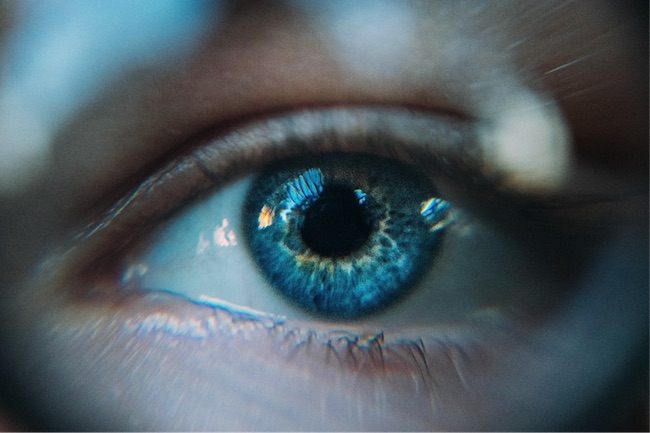Blue eyed people make up an estimated 8% of the population. However, in Northern European countries, such as Iceland, blue-eyed individuals find themselves in the majority. The question is why humans evolved to have blue eyes in the first place? Ultimately it must have started out as a genetic mutation, but what led this mutation to be passed on to offspring and to spread?
The short answer is that scientists are not exactly sure. Blue eyes have been around for at least 7,000 years, but scientists still cannot agree on why they evolved. However, they have several interesting theories.
Vitamin D Theory
One theory is the Vitamin D hypothesis, which is the idea that light colored skin, hair, and eyes co-evolved as humans moved into latitudes with shorter days, shorter summers, and therefore, less sunlight.
However, molecular geneticist and Associate Professor Rick Sturm of the University of Queensland had a problem with this hypothesis. He said that there is no evidence that light-colored irides let in more light or help you see better in low lighting than dark colored irises. Additionally, there is evidence that blue eyes evolved before light skin.
Sturm and his team did a study looking at the genetic information extracted from a 7000-year-old tooth belonging to a hunter-gatherer dubbed La Brana 1, unearthed from the northwestern Spain. When studying the hunter-gatherer’s genetic information, the team discovered that the man had dark hair, dark skin, and blue eyes. This archeological finding contradicts the theory that hair, skin, and eyes co-evolved in reaction to the limited sunlight.
Sexual Attractiveness Theory
Another theory is that people considered blue eyes to be more sexually attractive. Perhaps people were attracted to the novelty of blue eyes and therefore people with blue eyes were more likely to find mates. This theory is possible, though difficult to prove.
Seasonal Depression Coping Theory
Sturm has a theory of his own. He says blue eyes have been linked to people coping better with seasonal affective disorder, also known as seasonal depression. Seasonal affective disorder occurs in some people during extended periods of low light. Sturm suggests that blue eyed individuals may have been better able to withstand the dark days of the Neolithic European winters. Perhaps those individuals were more motivated to go out hunting and take care of themselves.
What Determines Eye Color
Some of you may remember making Punnett Squares in school and learning that two blue eyed individuals would always have blue eyed offspring. However, that is not always the case. There are a lot of factors that contribute to eye color. Eye color is affected by several genes, including the genes that control the amount of melanin pigment in our irides, a gene that controls whether melanin is produced in the outer layer of the iris, and the genes that control the structure of the iris and how much collagen it contains.
Conclusion
Just as many genetic factors affect eye color, there may have been a combination of several factors that lead to the evolution of blue eyes. Of course, we will understand if you have blue eyes and want to stick strictly to the attractiveness theory!

